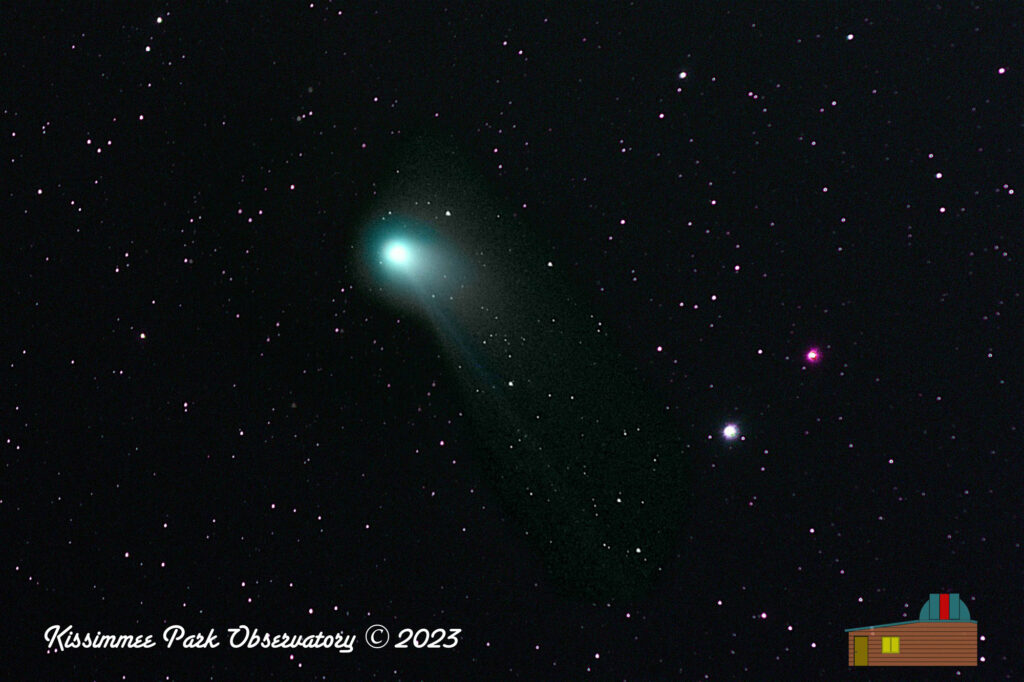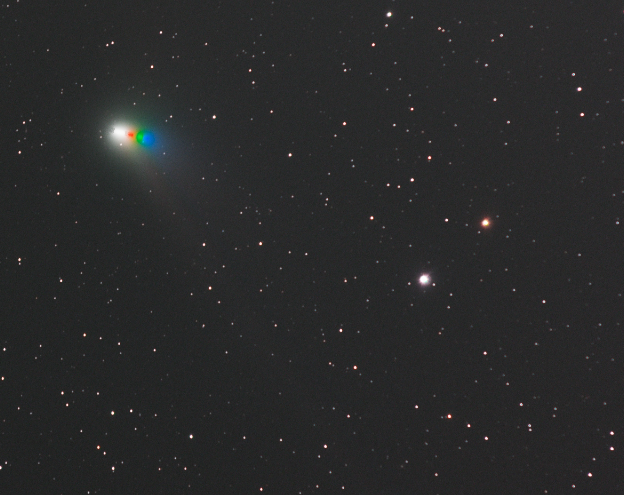Here is a current visitor to our solar system: Comet C/2022 E3 (ZTF). ZTF stands for the Zwicky Transient Facility, which is located at the Mount Palomar Observatory. The comet was discovered there last March when it was 399 million miles (643 million kilometers) from the sun, just inside the orbit of Jupiter. This image was taken just before the closest approach of this comet to the Earth, which occurred on February 1st, 2023.
Click on the image to see a larger version you can explore.
This was a complicated data set to collect and process. I initially captured a set of shorted exposure data (120 seconds per subframe) in LRGB. Then I did an additional 12 subframes of Luminance at 300 seconds per subframe. The longer exposure brought out significantly more tail of the comet. This image data was captured starting around 4:00am on January 18th, 2023.
There were two runs of processing done in Astro Pixel Processor. The first aligned the frames on the comet nucleus, resulting in an aligned comet with all the background stars showing as trails. The second pass aligned all the subframes on the stars, which gave an RGB star background with a trailed comet.
These were assembled in PhotoShop, where I removed the smeared comet head in the aligned RGB stars image, then layered the aligned comet image on top. This resulted in a sharp comet with a significant tail in front of a background of sharp stars. I also layered in the single best long-exposure luminance frame, which showed more of the cometary tail, but at the cost of having it be in monochrome. It was also noisy as it was a single frame, so I had to significantly blur it.
The one thing I learned is that it is not possible to capture a comet with a mono camera and expect to get color by using RGB filters. The challenge is that while doing imaging series for the different color filters, the comet moves against the star background. When this is integrated multiple different color comet nuclei appear! A One Shot Color camera would solve this problem. This caused significant problems in post-processing.
Image Info
- Imaged from the KPO field in Saint Cloud, Florida.
- Camera : ZWO ASI1600MM Pro
- Lens: Canon 100-400 f/5.6L lens, set to 387mm
- Mount: iOptron SmartEQ Pro
- Luminance: 12 subframes of 120s = 24 min integration, assigned to Short Luminance
- Luminance: 12 subframes of 300s = 60 min integration, assigned to Long Luminance
- Red: 6 subframes of 120s = 12 min integration, assigned to Red
- Green: 6 subframes of 120s = 12 min integration, assigned to Green
- Blue: 6 subframes of 120s = 12 min integration, assigned to Blue
- Total integration time: 120 min = 2 hours.
- Captured via ASIAir Pro automation
- Optical tracking via ASIAir automation, currently using ST4 mount control via the ASI120MM-S guide camera
- Separate channels stacked and LRGB integrated in Astro Pixel Processor
- Layered Comet tracked image and Star tracked image in Photoshop
- Final processing in Aperture


